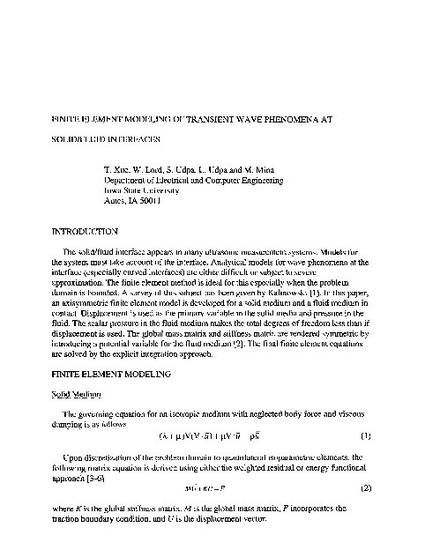
The solid/fluid interface appears in many ultrasonic measurement systems. Models for the system must take account of the interface. Analytical models for wave phenomena at the interface (especially curved interfaces) are either difficult or subject to severe approximation. The finite element method is ideal for this especially when the problem domain is bounded. A survey of this subject has been given by Kalinowski [1]. In this paper, an axisymmetric finite element model is developed for a solid medium and a fluid medium in contact. Displacement is used as the primary variable in the solid media and pressure in the fluid. The scalar pressure in the fluid medium makes the total degrees of freedom less than if displacement is used. The global mass matrix and stiffness matrix are rendered symmetric by introducing a potential variable for the fluid medium [2]. The final finite element equations are solved by the explicit integration approach.
Available at: http://works.bepress.com/mani_mina/7/
